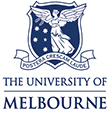Surgical site infections complicating coronary artery bypass graft surgery in Australia: time trends in infection rates, surgical antimicrobial prophylaxis, and pathogens using a comprehensive surveillance network, 2010–2023
Authors:
- Tanamas, S.K.
- Lim, L.L.
- Bull, A.L.
- Malloy, M.J.
- Brett, J.
- Dickson, Z.
- Worth, L.J.
- Friedman, N.D.
Details:
Journal of Hospital Infection, Volume 162, 2025-08-31
Article Link: Click here
Background In cardiac surgery, surgical site infection (SSI) is associated with increased morbidity and mortality, reoperations, lengthy antimicrobial treatment, increased hospital length of stay, and increased healthcare costs. Aim To report trends in SSI epidemiology complicating coronary artery bypass graft (CABG) surgery and to record changes in surgical antimicrobial prophylaxis (SAP) compliance and causative pathogens over time. Methods Data on CABG procedures from 2010 to 2023 submitted to the Victorian healthcare-associated infection surveillance coordinating centre were analysed. Trends in the SSI rate and choice, timing, and duration of SAP were modelled using Poisson regression. The most common pathogens causing SSI and their change over time were assessed. Findings A total of 32,446 CABG procedures were reported during the study period. Sternal SSI rate decreased from 2.7 per 100 procedures in 2010 to 1.6 per 100 procedures in 2023, representing a 15% annual decrease, when the model was adjusted for the number of years of participation in surveillance. This decrease was most marked during the first decade (IRR 0.70 [95% CI 0.64, 0.76]) followed by stable rates between 2020 and 2023 (IRR 1.08 [95% CI 0.93, 1.27]). Compliance with SAP choice was consistently >98%, while compliance with timing increased by an average of 1% per year to 83%, and compliance with duration fluctuated between 75% and 86%. The most frequent pathogens responsible for SSI were Staphylococcus aureus, Serratia marcescens, Staphylococcus epidermidis, and Klebsiella pneumoniae. The proportion of sternal and donor site SSIs involving Gram-negative pathogens increased from 38% to 59%. Conclusion This analysis of 14 years of surveillance data for SSI complicating CABG procedures highlighted a reduction in rates of SSI, high rates of compliance with antimicrobial choice for SAP, and the predominance of S. aureus as a causative pathogen of SSI in our region. Notably, we observed Gram-negative pathogens, particularly S. marcescens, to be responsible for a larger proportion of SSIs over recent years.


